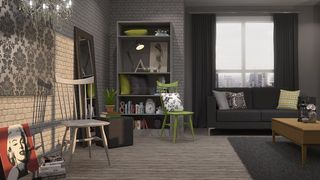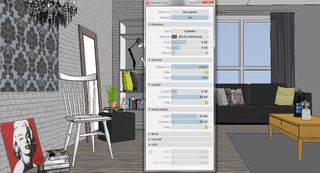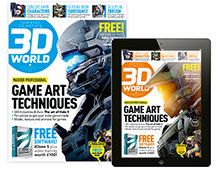How to create 3D textures using SketchUp
The SketchUp plug-in for Maxwell Render enables the creation of various textured materials. Anita Brown explains how.
The SketchUp plug-in for Maxwell Render offers a whole host of functions that enable the user to create a wide range of textured materials. If you're specifically interested in creating a densely textured rug then Maxwell Grass is your friend.
This feature (known as a Maxwell Render extension) can be accessed directly within the SketchUp interface via the SketchUp plug-in for Maxwell Render.
Officially it's called Maxwell Grass but don't let the name throw you: this extension has such a high number of unique parameters that it's possible to create textures that are ideal not only for grass textures, but also carpet and rugs.
Maxwell Grass basically generates geometry for selected groups in SketchUp once the scene has been exported to Maxwell Render.
It's all about the RAM
Pro tip: If only a small portion of the rug will be visible in the final render, use the Level of Detail parameter to render more blades near the camera and gradually less blades as the distance from the camera increases, thereby saving that precious RAM.

How to get started
To get started, select the group and then click on the Maxwell Grass icon in the SketchUp toolbar. A new window will open with a range of settings. Here you have the ability to specify the parameters of how you'd like the grass (or in this instance fur) to appear.
The Primitive setting is the first step in specifying the colour, shape and thickness of the blades, including the number of points (segments).
Get the Creative Bloq Newsletter
Daily design news, reviews, how-tos and more, as picked by the editors.
In my scene I chose the Cylinder setting and opted for quite thick individual strands. Just remember that RAM usage will increase depending on which type of Primitive you choose and the associated number of points.

The density and length of the blades can be specified according to preference and a very useful randomiser can be used to vary the length according to the percentage input.
The Maxwell Grass extension also includes Bend parameters. These control the bending of each strand of blade, at what length it starts bending, the angle it bends, and the bending radius (with randomisers for each).
The Bend parameters are invaluable when trying to recreate the behaviour of densely textured fur rugs and provide a high level of accuracy and realism.
Explore additional functionality of Maxwell Grass by using Maxwell Studio to add gradient and texture maps to further refine and enhance.
Words: Anita Brown
Anita provides a 3D visualisation service to the interior design and event design industries. She's also a Maxwell Render certified expert trainer.

The full version of this feature first appeared inside 3D World issue 202, a Zbrush anatomy special – on sale now.
Liked this? Try these...
- How to create textures for realistic 3D eyes
- 15 top tips for creating realistic sculptures
- The best photo editors
'

Thank you for reading 5 articles this month* Join now for unlimited access
Enjoy your first month for just £1 / $1 / €1
*Read 5 free articles per month without a subscription

Join now for unlimited access
Try first month for just £1 / $1 / €1
The Creative Bloq team is made up of a group of design fans, and has changed and evolved since Creative Bloq began back in 2012. The current website team consists of eight full-time members of staff: Editor Georgia Coggan, Deputy Editor Rosie Hilder, Ecommerce Editor Beren Neale, Senior News Editor Daniel Piper, Editor, Digital Art and 3D Ian Dean, Tech Reviews Editor Erlingur Einarsson and Ecommerce Writer Beth Nicholls and Staff Writer Natalie Fear, as well as a roster of freelancers from around the world. The 3D World and ImagineFX magazine teams also pitch in, ensuring that content from 3D World and ImagineFX is represented on Creative Bloq.
